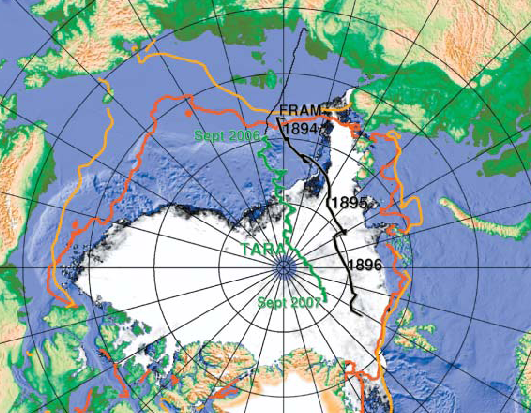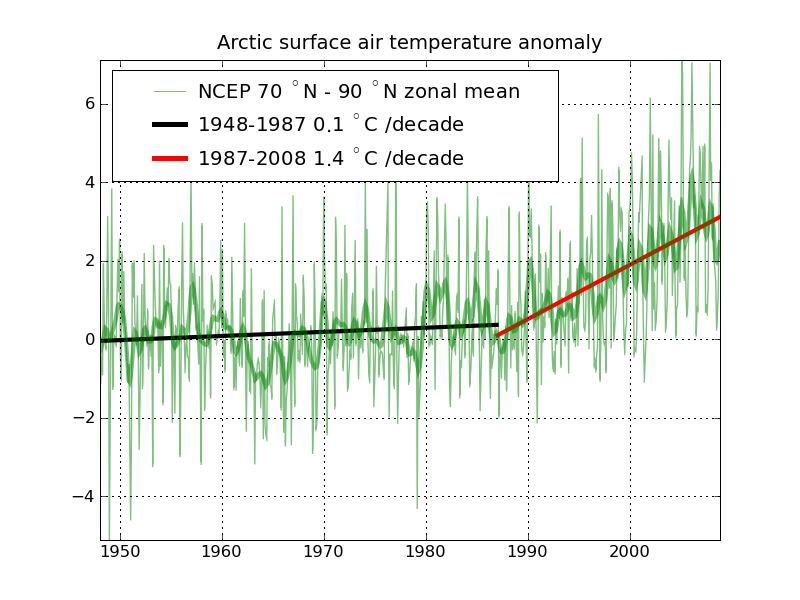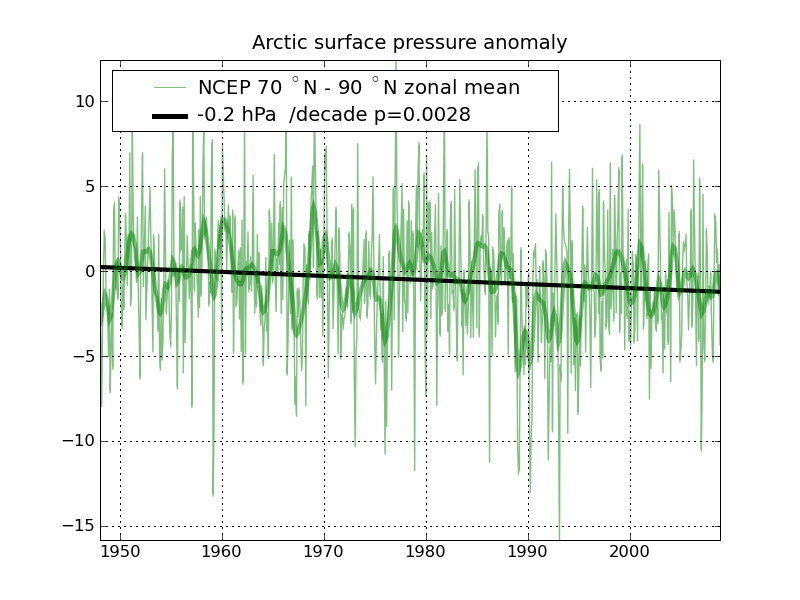|
Size: 3949
Comment:
|
Size: 3937
Comment:
|
| Deletions are marked like this. | Additions are marked like this. |
| Line 37: | Line 37: |
| === The rapid retreat of Arctic sea ice 1.12.2008 (Lars Kaleschke) === | == The rapid retreat of Arctic sea ice 1.12.2008 (Lars Kaleschke) == |
| Line 39: | Line 39: |
| ==== Increase of sea ice drift velocity ==== | === Increase of sea ice drift velocity === |
| Line 46: | Line 46: |
| ==== Increase of temperature and wind speed, decrease of pressure ==== | === Increase of temperature and wind speed, decrease of pressure === |
| Line 55: | Line 55: |
| ==== Trends in sea ice extent, age and thickness ==== | === Trends in sea ice extent, age and thickness === |
| Line 62: | Line 62: |
| ==== Summary ==== | === Summary === |
| Line 72: | Line 72: |
| ==== Questions ==== | === Questions === |
Contents
CliSAP Working Group Arctic Variability
Sprecher/Kontakt Lars Kaleschke
Ziele
Die CliSAP-Arbeitsgruppe "Arktische Variabilität" (AV) versteht sich als Basis für die instituts- und projektübergreifende Kommunikation zu dem Themenkomplex Klimawandel in der Arktis. Um die Kommunikation in Gang zu bringen, werden Arbeitstreffen zu bestimmten Themen in einem 4-8 wöchigen Rhythmus organisiert. Diese für alle Interessierten offenen Treffen sollen durch einen etwa 15-minütigen Impulsvortrag eingeleitet werden. In der darauf folgenden etwa 45-minütigen Diskussion sollen folgende Fragen beantwortet werden: Wer arbeitet an diesem Thema? Wie ist der aktuelle Stand des Wissens? Was sind die brennenden offenen Fragen?
Themen
- Wasser- und Energiebudget der Arktis (hydrologischer Kreislauf, Eisvolumen und -transport, Albedo)
- Interne Variabilität
- Response auf Variationen des externen Forcings (CO2, solare Einstrahlung, Vulkane)
- Biogeochemie der Arktis
- Schmelzen von Grönland
- Vermischungsprozesse auf dem Schelf
- Austausch Schelf-Ozean
- Numerik (Advektion, Meereismodellierung)
- Parametrisierungen für heterogene Grenzflächen
- Nicht hinreichend verstandene Prozesse (Meereis, Wolken)
- Permafrost/Gashydratdissoziation
The rapid retreat of Arctic sea ice 1.12.2008 (Lars Kaleschke)
Increase of sea ice drift velocity

Increase of temperature and wind speed, decrease of pressure
Based on NCEP



Trends in sea ice extent, age and thickness
Laxon et al., High interannual variability of sea ice thickness in the Arctic region, Nature 2003
Lindsay et al. (2008), Arctic Sea Ice Retreat in 2007 Follows Thinning Trend, Journal of Climate
Summary
- Surface air temperature increased by 3°C since 1987
- Wind speed increased by 0.6 m/s since 1950
- Ice drift speed doubled since 1950
- September area decreased by 40% since 1990s
- ~50% reduction of ice thickness in the transpolar drift since 2001
- Interannual thickness variability ~20% mainly controlled by thermodynamics
- Model suggests thinning since 1987 at a rate of -20%/decade
- 2007 ice extent strongly anomalous, ice mass loss not
- Close to tipping point?
Questions
- How large is the internal variability?
- Quality of data?
- Relibility of mode?
